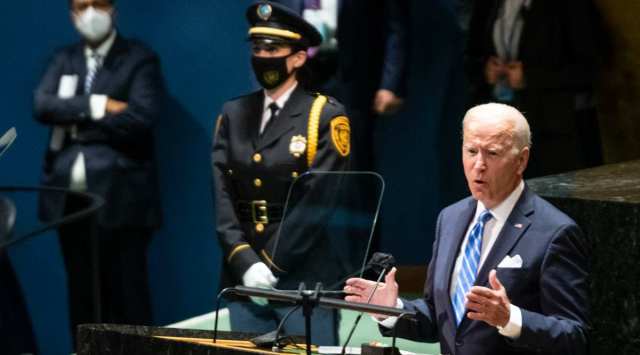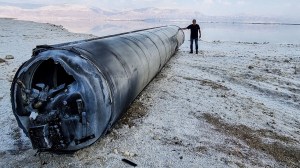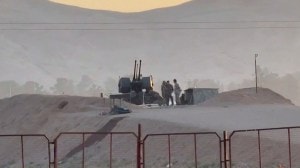- India
- International
Joe Biden declared the war over. But wars go on
Biden’s assertion at the UN was intended to show he had made good on his pledge to end America’s longest war, and his speech came on the same day that the last soldier to die before the US withdrawal from Afghanistan was laid to rest at Arlington National Cemetery.
 President Joe Biden addresses the 76th Session of the United Nations General Assembly at the UN headquarters in New York, Sept. 21, 2021. (Doug Mills/The New York Times)
President Joe Biden addresses the 76th Session of the United Nations General Assembly at the UN headquarters in New York, Sept. 21, 2021. (Doug Mills/The New York Times)Written by Mark Mazzetti
President Joe Biden declared to the United Nations on Tuesday that “for the first time in 20 years, the United States is not at war. We’ve turned the page.”
One day earlier, a missile fired from a US drone incinerated a car driving along a remote road in northwestern Syria, a strike aimed against a suspected al-Qaida operative. Three weeks before that, the military launched an airstrike in Somalia targeting members of the al-Shabab militant group, part of an American air campaign in that country that has intensified in recent months.
There are no longer US troops in Afghanistan, but America’s wars go on.
Biden’s assertion at the UN was intended to show he had made good on his pledge to end America’s longest war, and his speech came on the same day that the last soldier to die before the US withdrawal from Afghanistan was laid to rest at Arlington National Cemetery.

But it was just the latest attempt by an American president in the two decades since the Sept. 11 attacks to massage the language of warfare to mask a sometimes inconvenient reality: that America is still engaged in armed conflict throughout the world.
In a letter to Congress in June, Biden listed all the countries where US troops are operating against various militant groups — from Iraq and Syria to Yemen to the Philippines to Niger.
There are more than 40,000 US troops stationed around the Middle East, including 2,500 troops in Iraq more than 18 years after President George W. Bush ordered an invasion of that country. About 900 troops are in Syria on a mission begun by President Barack Obama in 2015, and Biden has said he would direct the military to carry out future operations in Afghanistan against emerging terrorist threats, even if they are launched from bases outside the country.
“Our troops are not coming home. We need to be honest about that,” Rep. Tom Malinowski, D-N.J., said during congressional testimony this month from Secretary of State Antony Blinken. “They are merely moving to other bases in the same region to conduct the same counterterrorism missions, including in Afghanistan.”
The fracturing of the Islamic State — and the emergence of affiliates of the group in North Africa, Asia and elsewhere — has given a justification to military planners to continue some of the operations Biden described in his letter to Congress.
The majority of these deployments do not involve “routine engagement in combat,” the letter said, but in many places U.S. troops “may be required to defend themselves against threats or attacks.”
Pentagon data released in recent months shows a consistent drumbeat of strikes against the Islamic State in Iraq and Syria, even if it is less than a handful of strikes each month.
The shadow wars fought with drones and special operations troops have been as much a part of the history of the post-Sept. 11 era as the conflicts in Iraq and Afghanistan. But American presidents in different ways have promoted their benefits to the American public by portraying them as somehow cleaner, more antiseptic — what the national security expert Micah Zenko calls “defining war down.”
Obama said repeatedly that he opposed American “boots on the ground” in far-flung parts of the world, yet his administration made exceptions for special operations forces that sometimes led to U.S. officials making linguistic contortions to downplay the combat role the troops would play.
In late 2015, when pressed by a reporter on whether the decision to deploy troops to Iraq and Syria was a reversal of his “no boots on the ground” pledge, he replied that the American people knew what he meant by that pledge — “that we’re not going to do an Iraq-style invasion of Iraq or Syria with battalions that are moving across the desert.” The Pentagon called the first group of 200 troops to deploy a “specialized expeditionary targeting force.”
When Bush gave a secret order in 2008 to launch a punishing drone campaign against al-Qaida in Pakistan, he never had to speak publicly about the operations because they were done under the CIA’s covert action authority.
As a presidential candidate in 2016, Donald Trump spoke skeptically about the big, costly wars in Iraq and Afghanistan but used blustery language about how he would “bomb the hell” out of the Islamic State. Eventually, Zenko said, he “bombed every country that Obama had.”
Biden came to office vowing an end to the “forever wars” — and has firmly defended his decision to pull U.S. troops from Afghanistan in the face of withering criticism from lawmakers of both parties. But administration officials have been clear that combat missions in other countries will continue, namely those that do not involve large deployments of U.S. troops or draw intense news media scrutiny.
Some veterans do not see such tidy distinctions. “Everyone’s perspective of war is very different,” said Rep. Ruben Gallego, D-Ariz., a veteran of the Iraq War. But, he added, “from my perspective, there’s people shooting at you, that’s considered war.”
The administration has spent months trying to forge new rules governing how and when to carry out lethal strikes outside declared war zones — an effort born from the belief among Biden’s team that the rules had become too relaxed during Trump’s four years in office.
But the rapid collapse of Afghanistan’s government — and the view among administration officials that al-Qaida and other groups could gain strength in the country sooner than had been originally envisioned — has complicated this process. While White House officials originally envisioned keeping tight control over approval of military strikes, in recent weeks they have debated giving more latitude to military commanders to carry out strikes in Afghanistan and certain other countries where operations might be more frequent.
Four U.S. presidents have embraced the new American way of war in part because Congress has put so few limits on where they can wage it. The bulk of American counterterrorism operations around the world are being conducted using a 20-year-old authorization Congress gave Bush to avenge the Sept. 11 attacks.
For years, top lawmakers have denounced the fact that subsequent presidents have continued to use the 2001 resolution, the Authorization for Use of Military Force, to justify operations against groups that did not even exist when the Sept. 11 attacks occurred. But there has never been sufficient political consensus on Capitol Hill to repeal or replace the decades-old authorization.
Apr 20: Latest News
- 01
- 02
- 03
- 04
- 05






































